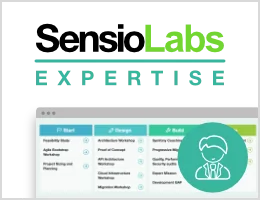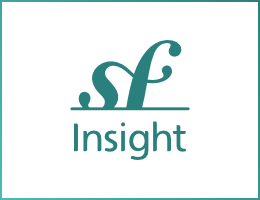Installing Encore
First, make sure you install Node.js. Then, follow the instructions below, which depend on whether you are installing Encore in a Symfony application or not.
Installing Encore in Symfony Applications
Run these commands to install both the PHP and JavaScript dependencies in your project:
1 2
$ composer require symfony/webpack-encore-bundle
$ npm installIf you are using Symfony Flex, this will install and enable
the WebpackEncoreBundle, create the assets/ directory, add a
webpack.config.js file, and add node_modules/ to .gitignore. You can
skip the rest of this article and go write your first JavaScript and CSS by
reading Encore: Setting up your Project!
If you are not using Symfony Flex, you'll need to create all these directories and files by yourself following the instructions shown in the next section.
Installing Encore in non Symfony Applications
Install Encore into your project via npm:
1
$ npm install @symfony/webpack-encore --save-devThis command creates (or modifies) a package.json file and downloads
dependencies into a node_modules/ directory.
Tip
You should commit package.json and package-lock.json
to version control, but ignore node_modules/.
Creating the webpack.config.js File
Next, create a new webpack.config.js file at the root of your project. This
is the main config file for both Webpack and Webpack Encore:
1 2 3 4 5 6 7 8 9 10 11 12 13 14 15 16 17 18 19 20 21 22 23 24 25 26 27 28 29 30 31 32 33 34 35 36 37 38 39 40 41 42 43 44 45 46 47 48 49 50 51 52 53 54 55 56 57 58 59 60 61 62 63 64 65 66 67 68 69 70 71 72 73 74 75
const Encore = require('@symfony/webpack-encore');
// Manually configure the runtime environment if not already configured yet by the "encore" command.
// It's useful when you use tools that rely on webpack.config.js file.
if (!Encore.isRuntimeEnvironmentConfigured()) {
Encore.configureRuntimeEnvironment(process.env.NODE_ENV || 'dev');
}
Encore
// directory where compiled assets will be stored
.setOutputPath('public/build/')
// public path used by the web server to access the output path
.setPublicPath('/build')
// only needed for CDN's or sub-directory deploy
//.setManifestKeyPrefix('build/')
/*
* ENTRY CONFIG
*
* Each entry will result in one JavaScript file (e.g. app.js)
* and one CSS file (e.g. app.css) if your JavaScript imports CSS.
*/
.addEntry('app', './assets/app.js')
// enables the Symfony UX Stimulus bridge (used in assets/bootstrap.js)
.enableStimulusBridge('./assets/controllers.json')
// When enabled, Webpack "splits" your files into smaller pieces for greater optimization.
.splitEntryChunks()
// will require an extra script tag for runtime.js
// but, you probably want this, unless you're building a single-page app
.enableSingleRuntimeChunk()
/*
* FEATURE CONFIG
*
* Enable & configure other features below. For a full
* list of features, see:
* https://symfony.com/doc/current/frontend.html#adding-more-features
*/
.cleanupOutputBeforeBuild()
.enableBuildNotifications()
.enableSourceMaps(!Encore.isProduction())
// enables hashed filenames (e.g. app.abc123.css)
.enableVersioning(Encore.isProduction())
.configureBabel((config) => {
config.plugins.push('@babel/plugin-transform-class-properties');
})
// enables @babel/preset-env polyfills
.configureBabelPresetEnv((config) => {
config.useBuiltIns = 'usage';
config.corejs = 3;
})
// enables Sass/SCSS support
//.enableSassLoader()
// uncomment if you use TypeScript
//.enableTypeScriptLoader()
// uncomment if you use React
//.enableReactPreset()
// uncomment to get integrity="..." attributes on your script & link tags
// requires WebpackEncoreBundle 1.4 or higher
//.enableIntegrityHashes(Encore.isProduction())
// uncomment if you're having problems with a jQuery plugin
//.autoProvidejQuery()
;
module.exports = Encore.getWebpackConfig();Creating Other Supporting File
Next, open the new assets/app.js file which contains some JavaScript code
and imports some CSS:
1 2 3 4 5 6 7 8 9 10 11 12 13
// assets/app.js
/*
* Welcome to your app's main JavaScript file!
*
* We recommend including the built version of this JavaScript file
* (and its CSS file) in your base layout (base.html.twig).
*/
// any CSS you import will output into a single css file (app.css in this case)
import './styles/app.css';
// start the Stimulus application
import './bootstrap';And the new assets/styles/app.css file:
1 2 3 4
/* assets/styles/app.css */
body {
background-color: lightgray;
}You should also add an assets/bootstrap.js file, which initializes Stimulus:
a system that you'll learn about soon:
1 2 3 4 5 6 7 8 9 10 11 12
// assets/bootstrap.js
import { startStimulusApp } from '@symfony/stimulus-bridge';
// Registers Stimulus controllers from controllers.json and in the controllers/ directory
export const app = startStimulusApp(require.context(
'@symfony/stimulus-bridge/lazy-controller-loader!./controllers',
true,
/\.(j|t)sx?$/
));
// register any custom, 3rd party controllers here
// app.register('some_controller_name', SomeImportedController);Then create an assets/controllers.json file, which also fits into
the Stimulus system:
1 2 3 4
{
"controllers": [],
"entrypoints": []
}Finally, though it's optional, add the following scripts to your package.json
file so you can run the same commands in the rest of the documentation:
1 2 3 4 5 6
"scripts": {
"dev-server": "encore dev-server",
"dev": "encore dev",
"watch": "encore dev --watch",
"build": "encore production --progress"
}You'll customize and learn more about these files in Encore: Setting up your Project. When you execute Encore, it will ask you to install a few more dependencies based on which features of Encore you have enabled.
Caution
Some of the documentation will use features that are specific to Symfony or Symfony's WebpackEncoreBundle. These are optional, and are special ways of pointing to the asset paths generated by Encore that enable features like versioning and split chunks.

